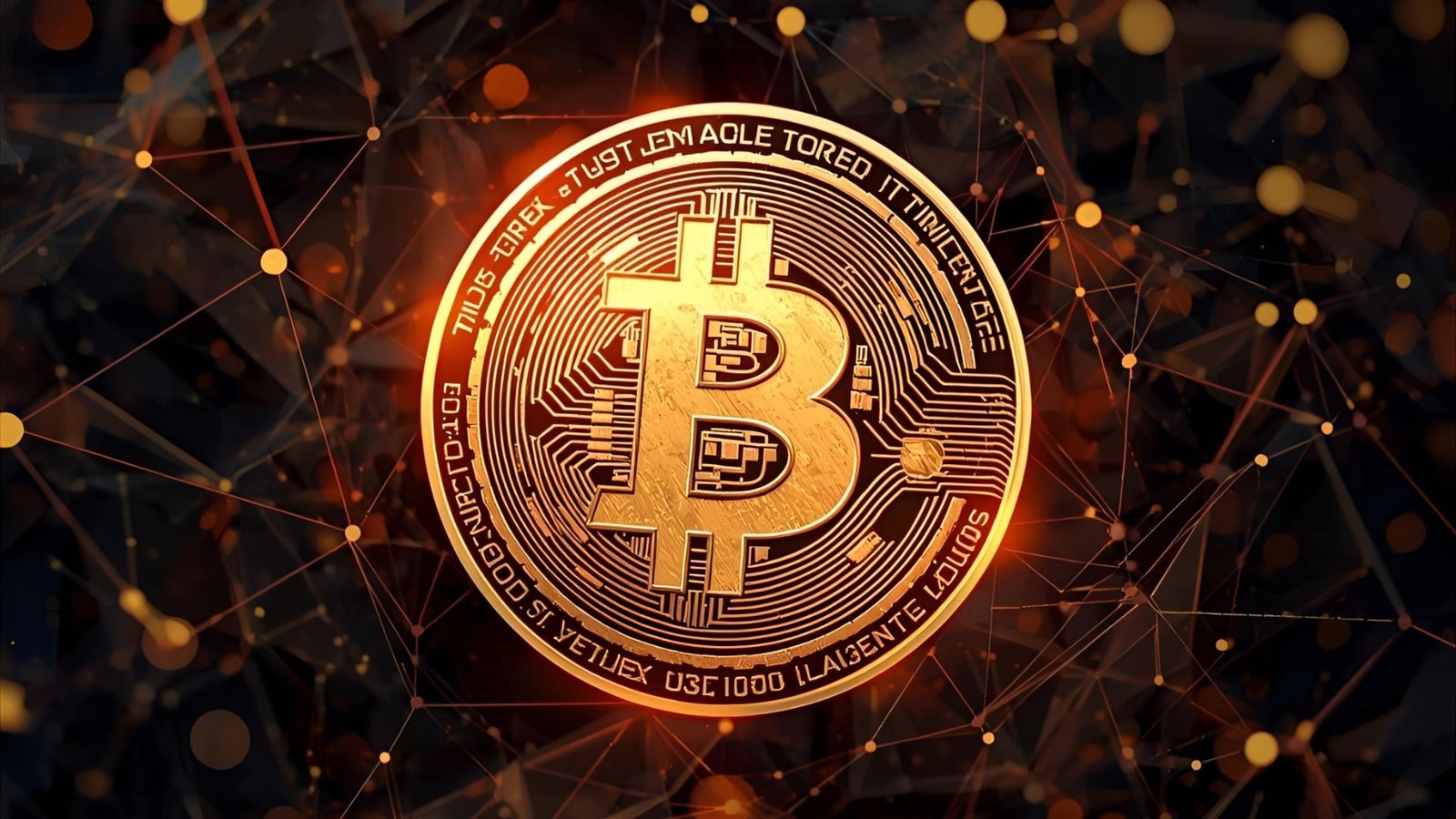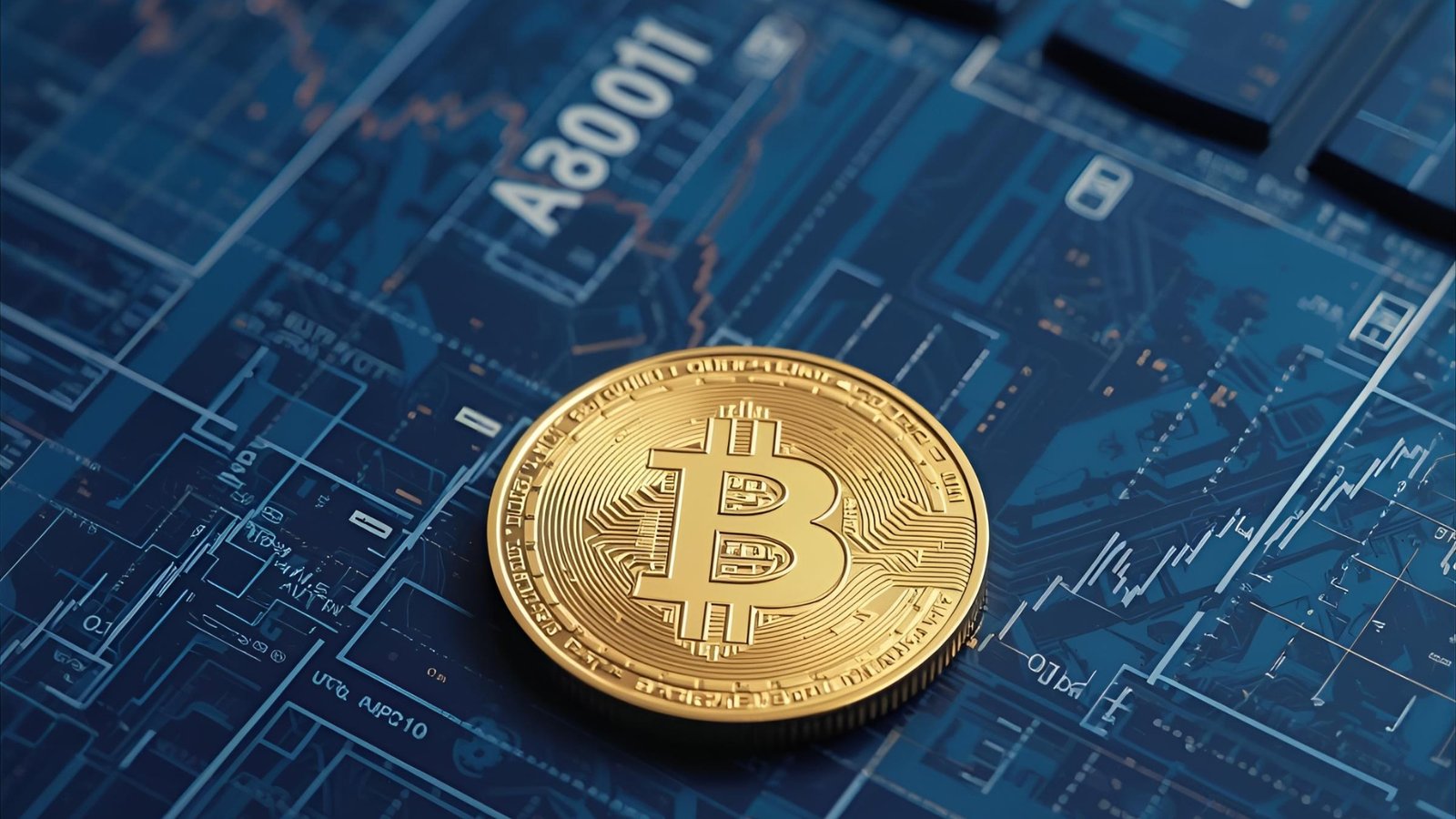The founder and president of Forest for the Trees recently made waves with a provocative statement that has sent ripples through the Bitcoin community. According to Gromen, Bitcoin yield critiques fundamentally expose what he terms “Western financial privilege” – a perspective that challenges conventional investment wisdom and forces us to reconsider our assumptions about asset value and risk.
Gromen’s assertion that dismissing Bitcoin’s lack of yield exposes Western financial privilege has sparked intense debate among investors and analysts worldwide. His argument centers on the premise that yield comes with inherent risk, pointing to catastrophic failures like the FTX collapse as stark reminders of this reality. This perspective isn’t merely academic; it represents a fundamental shift in how we evaluate store-of-value assets in an increasingly interconnected global economy.
The macroeconomist’s stance comes at a time when Bitcoin continues to demonstrate its resilience as a store of value, with public treasuries holding over $119 billion in the cryptocurrency. This institutional adoption underscores the growing recognition of Bitcoin’s unique position in the global financial ecosystem, challenging traditional narratives about yield-bearing assets and their supposed superiority.
Luke Gromen’s Macroeconomic Perspective
Who Is Luke Gromen
Luke Gromen stands as one of the most respected voices in macroeconomic analysis, particularly regarding Bitcoin’s role in the global financial system. As the founder of Forest for the Trees, a research firm established in 2014, Gromen specializes in global macroeconomic, thematic, and sector trends that shape markets worldwide. His educational background includes a BBA in Finance and Accounting from the University of Cincinnati, complemented by an MBA from Case Western Reserve University.
What sets Gromen apart in the crowded field of financial analysts is his unique ability to connect seemingly disparate global economic trends into coherent narratives that often prove prescient. His analysis extends far beyond simple market predictions, diving deep into the structural forces that drive monetary policy, sovereign debt dynamics, and the evolution of reserve assets.
The Context Behind Bitcoin Yield Critiques
The debate surrounding Bitcoin yield critiques didn’t emerge in a vacuum. Traditional investors, particularly those accustomed to Western financial markets, often question Bitcoin’s value proposition because it doesn’t generate income like bonds, dividend-paying stocks, or interest-bearing savings accounts. This perspective, while understandable within the context of developed financial markets, reveals a fundamental misunderstanding of Bitcoin’s primary function and global utility.
Gromen’s response to these criticisms is both direct and illuminating: “Anyone who says that is showing their Western financial privilege.” This statement cuts to the heart of a cognitive bias that pervades much of the investment community – the assumption that all valuable assets must generate yield to be worthwhile investments.
The Western Privilege Argument Explained
Defining Western Financial Privilege
Western financial privilege, as articulated by Gromen, refers to the luxury of living within stable monetary systems where yield-bearing assets have historically provided reliable returns with relatively manageable risks. This privilege manifests in several key ways:
Stable Currency Systems: Citizens of developed Western nations rarely experience hyperinflation, currency devaluation, or capital controls that are commonplace in emerging markets. This stability creates a false sense of security regarding the safety of yield-bearing investments.
Sophisticated Financial Infrastructure: Western investors have access to mature banking systems, regulated exchanges, and legal protections that simply don’t exist in many parts of the world. This infrastructure makes yield-bearing assets appear safer than they might actually be in a global context.
Historical Performance Bias: Decades of relatively stable economic growth and low inflation in Western markets have created an expectation that yield-bearing assets will continue to outperform non-yielding alternatives. This bias ignores the historical anomaly that these conditions represent.
Global Financial Realities vs. Western Assumptions
The disconnect between Western financial assumptions and global realities becomes starkly apparent when we examine the experiences of investors outside developed markets. In countries experiencing currency crises, hyperinflation, or political instability, the pursuit of yield often becomes secondary to capital preservation.
Consider the situation in Argentina, where investors have watched yield-bearing peso-denominated assets lose value despite generating positive returns in nominal terms. Similarly, Turkish investors who prioritized yield over capital preservation found themselves devastated as the lira collapsed, wiping out years of accumulated interest payments in a matter of months.
In these contexts, Bitcoin yield critiques seem almost absurd. When your primary concern is preserving purchasing power across decades rather than generating monthly income, the absence of yield becomes irrelevant compared to the asset’s ability to maintain value independent of local monetary policies.
The FTX Collapse A Case Study in Yield Risk
When Yield Becomes a Liability
Gromen’s reference to the FTX collapse serves as a powerful illustration of his argument: “You know, staking on FTX, you were getting a yield, how did that go?” This rhetorical question highlights the inherent trade-off between yield and risk that many investors conveniently ignore when criticizing Bitcoin’s lack of income generation.
The FTX debacle represents one of the most spectacular failures in cryptocurrency history, with billions of dollars in customer funds allegedly misappropriated by the exchange’s leadership. Investors who were attracted to FTX’s yield-bearing products – including staking rewards and lending programs – found themselves among the biggest losers when the exchange collapsed in November 2022.
Lessons from Yield-Chasing Disasters
The FTX collapse wasn’t an isolated incident but rather the latest in a long series of failures that have plagued yield-seeking investors throughout financial history. From Ponzi schemes to overleveraged hedge funds, the pursuit of yield has consistently led investors into dangerous territory.
Celsius Network: Once a darling of the cryptocurrency lending space, Celsius offered yields of up to 18% on various cryptocurrency deposits. When the platform filed for bankruptcy in 2022, hundreds of thousands of investors lost access to their funds, learning too late that high yields often signal unsustainable business models.
Terra Luna and Anchor Protocol: The Terra ecosystem’s promise of 20% yields on UST deposits through Anchor Protocol attracted billions in investment before the entire system collapsed in spectacular fashion, wiping out nearly all value in a matter of days.
Traditional Finance Parallels: These cryptocurrency examples mirror countless disasters in traditional finance, from the savings and loan crisis of the 1980s to the subprime mortgage debacle of 2008. In each case, the pursuit of yield blinded investors to the underlying risks.
Bitcoin as Digital Store of Value

Redefining Value in the Digital Age
Understanding why Bitcoin yield critiques miss the mark requires a fundamental shift in how we think about value storage and transfer. Bitcoin wasn’t designed to compete with income-generating assets; it was created to serve as a neutral, decentralized store of value that operates independent of any single government or monetary authority.
This distinction is crucial because it positions Bitcoin alongside other store-of-value assets like gold, art, and real estate in their non-income-generating forms. Just as investors don’t typically criticize gold for failing to pay dividends, the expectation that Bitcoin should generate yield reflects a category error rather than a legitimate critique.
Historical Precedents for Non-Yielding Assets
Throughout history, some of the most valuable and sought-after assets have generated no direct yield:
Gold: For thousands of years, gold has served as humanity’s primary store of value without generating any income. Its value lies not in its ability to produce cash flows but in its scarcity, durability, and universal acceptance.
Collectibles and Art: Rare artworks, vintage wines, and collectible items often appreciate significantly over time despite generating no income. Their value stems from scarcity, desirability, and cultural significance.
Raw Land: Undeveloped land generates no income but can serve as an excellent store of value and hedge against inflation over long periods.
Bitcoin’s Unique Properties as a Store of Value
Bitcoin combines the best aspects of traditional store-of-value assets while addressing many of their limitations:
Digital Scarcity: With a fixed supply cap of 21 million coins, Bitcoin offers mathematically guaranteed scarcity that cannot be manipulated by central authorities.
Portability: Unlike gold or real estate, Bitcoin can be stored and transferred digitally, making it accessible to anyone with an internet connection regardless of geographic location.
Divisibility: Bitcoin can be divided into 100 million satoshis, allowing for precise transactions at any scale.
Censorship Resistance: No government or institution can prevent Bitcoin transactions or confiscate properly stored Bitcoin, making it an ideal store of value for individuals in oppressive regimes.
Global Adoption and Institutional Recognition
Corporate Treasury Adoption
The argument for Bitcoin as a store of value gains significant credibility when we examine the growing trend of corporate treasury adoption. Companies like MicroStrategy, Tesla, and Square have allocated portions of their cash reserves to Bitcoin, recognizing its potential as a hedge against currency debasement and inflation.
MicroStrategy’s Strategy: Under the leadership of Michael Saylor, MicroStrategy has accumulated over 190,000 Bitcoin, representing one of the largest corporate holdings of the cryptocurrency. The company’s rationale centers on Bitcoin’s superior monetary properties compared to cash and traditional assets.
Public Company Treasuries: With public treasuries now holding over $119 billion in Bitcoin, institutional adoption has moved beyond experimental allocations to meaningful strategic positions. This trend suggests that sophisticated institutional investors understand Bitcoin’s value proposition beyond simple yield considerations.
Central Bank Interest and Strategic Reserves
While no major central bank has officially adopted Bitcoin as a reserve asset, several countries and monetary authorities have shown increasing interest in the cryptocurrency as a potential component of their foreign exchange reserves.
El Salvador’s Bitcoin Strategy: El Salvador’s decision to make Bitcoin legal tender and accumulate it as a strategic reserve asset represents the first nation-state level adoption. While controversial, this move demonstrates how countries with limited access to traditional reserve assets might view Bitcoin differently than established Western powers.
Emerging Market Interest: Countries facing currency crises or international sanctions have shown increasing interest in Bitcoin as a way to circumvent traditional financial systems and preserve value outside the reach of foreign governments.
Macroeconomic Factors Driving Bitcoin Adoption

Monetary Policy Implications
Gromen’s analysis of Bitcoin yield critiques must be understood within the broader context of global monetary policy shifts that have characterized the post-2008 financial landscape. Central banks worldwide have engaged in unprecedented monetary expansion, creating conditions that favor hard assets over traditional yield-bearing investments.
Zero Interest Rate Policies: Extended periods of near-zero interest rates in developed economies have compressed yields on traditional safe assets, making the absence of Bitcoin yield less significant relative to alternatives.
Quantitative Easing Programs: Massive asset purchase programs by central banks have inflated the prices of bonds and other yield-bearing securities while simultaneously debasing the currencies in which those yields are denominated.
Inflation Dynamics: Rising inflation in many developed economies has turned positive nominal yields into negative real yields, effectively penalizing investors who prioritize income generation over capital preservation.
Sovereign Debt Crisis Concerns
One of Gromen’s consistent themes involves the unsustainable trajectory of sovereign debt levels in developed economies. This analysis provides crucial context for understanding why Bitcoin yield critiques may be missing the forest for the trees.
U.S. Debt Dynamics: With the U.S. national debt exceeding $33 trillion and continuing to grow at an unsustainable pace, questions arise about the long-term viability of dollar-denominated assets, regardless of their yield characteristics.
European Challenges: The European Union faces similar challenges with high debt levels, demographic headwinds, and political fragmentation that could threaten the stability of euro-denominated yield-bearing assets.
Emerging Market Pressures: Emerging market economies face even more acute challenges, with currency instability and limited access to international capital markets making traditional yield-seeking strategies particularly dangerous.
Cultural and Psychological Factors
Western Investment Culture Bias
The persistence of Bitcoin yield critiques reveals deep-seated cultural biases within Western investment communities that may be counterproductive in the current economic environment:
Income-Focused Mindset: Western investors, particularly retirees and institutions, have been conditioned to prioritize current income over long-term capital appreciation, creating a bias against assets that don’t generate regular cash flows.
Quarterly Reporting Pressures: Public companies and institutional investors face constant pressure to demonstrate regular income and profits, making non-yielding assets like Bitcoin appear less attractive from a reporting perspective.
Regulatory Accounting Standards: Traditional accounting and regulatory frameworks often treat non-yielding assets unfavorably, creating institutional barriers to Bitcoin adoption regardless of its fundamental merits.
Global Perspective Differences
Investors from different cultural and economic backgrounds approach asset evaluation with varying priorities:
Wealth Preservation Cultures: In societies that have experienced hyperinflation, war, or political instability, the focus shifts from yield generation to wealth preservation across generations.
Emerging Market Pragmatism: Investors in developing economies often prioritize capital mobility and protection from local economic instability over regular income generation.
Generational Differences: Younger investors, regardless of geography, tend to be more comfortable with digital assets and less focused on traditional yield metrics.
Future Implications and Trends
Evolution of Yield-Bearing Bitcoin Products
While Bitcoin itself doesn’t generate yield, the ecosystem around it is rapidly evolving to provide income-generating opportunities for those who insist on cash flow:
Bitcoin ETFs: The approval of Bitcoin exchange-traded funds has created new opportunities for institutional investors to gain Bitcoin exposure within traditional portfolio structures.
Wrapped Bitcoin DeFi: Protocols that allow Bitcoin to be used in decentralized finance applications are creating new yield opportunities, though these come with additional risks that validate Gromen’s warnings.
Bitcoin Mining Stocks: Companies involved in Bitcoin mining offer indirect exposure to Bitcoin appreciation while generating operational cash flows, though this introduces additional business risks.
Regulatory Landscape Changes
The regulatory environment surrounding Bitcoin continues to evolve in ways that may affect how Bitcoin yield critiques are perceived:
CFTC and SEC Classifications: Clear regulatory classifications of Bitcoin as a commodity rather than a security may reduce pressure for yield-bearing characteristics.
Tax Treatment Evolution: Changes in how Bitcoin gains are taxed relative to dividend and interest income could affect the relative attractiveness of yielding versus non-yielding assets.
International Coordination: Global regulatory coordination efforts may create more favorable conditions for Bitcoin adoption while maintaining appropriate consumer protections.
Addressing Common Counterarguments
Bitcoin Doesn’t Produce Anything
One of the most common Bitcoin yield critiques centers on the idea that Bitcoin doesn’t “produce” anything and therefore can’t justify its value. This argument reveals a fundamental misunderstanding of what Bitcoin actually does:
Network Security Production: Bitcoin miners produce the most secure and decentralized settlement network in human history, processing trillions of dollars in transactions.
Trust Minimization: Bitcoin produces trust minimization, allowing parties to transact without relying on intermediaries or central authorities.
Monetary Sovereignty: Bitcoin produces monetary sovereignty for individuals and institutions, providing alternatives to traditional banking systems.
“Gold at Least Has Industrial Uses”
Another frequent comparison suggests that gold’s industrial applications justify its store-of-value premium in a way that Bitcoin cannot match:
Monetary Premium vs. Industrial Value: The vast majority of gold’s market value comes from its monetary premium rather than industrial demand, suggesting that utility-based arguments miss the point.
Digital Utility: Bitcoin’s “industrial” uses include international remittances, store of value in unstable economies, and censorship-resistant transactions – all of which provide real economic utility.
Network Effects: Unlike gold, Bitcoin’s utility increases with adoption through network effects, potentially making it more valuable as a monetary asset over time.
“Bitcoin Is Too Volatile”
Volatility represents perhaps the strongest practical argument against Bitcoin as a store of value, though this criticism is becoming less valid over time:
Maturation Process: As Bitcoin adoption grows and market capitalization increases, volatility has generally decreased, suggesting this may be a temporary rather than permanent characteristic.
Volatility vs. Debasement: For investors in countries experiencing currency crises, Bitcoin’s volatility may be preferable to the certainty of currency debasement.
Time Horizon Considerations: Bitcoin’s volatility decreases significantly over longer time horizons, making it more suitable for long-term store of value purposes than short-term speculation.
Investment Strategy Implications
Portfolio Allocation Frameworks
Understanding Gromen’s perspective on Bitcoin yield critiques has important implications for how investors should think about portfolio construction:
Core vs. Satellite Positioning: Bitcoin might be better understood as a core holding for long-term wealth preservation rather than a satellite speculation, particularly for investors concerned about monetary debasement.
Risk Budgeting: Instead of comparing Bitcoin to bonds or dividend stocks, it should be evaluated against other store-of-value assets like gold, real estate, or art.
Geographic Diversification: Bitcoin provides geographic diversification that traditional assets cannot match, making it valuable even for investors in stable Western economies.
Rebalancing Considerations
The absence of yield from Bitcoin creates unique rebalancing dynamics that investors must consider:
Tax Efficiency: Bitcoin’s lack of dividends or interest payments can provide tax advantages in certain jurisdictions, as gains are only realized upon sale.
Rebalancing Triggers: Without regular cash flows, Bitcoin positions require different rebalancing triggers based on market value changes rather than income generation.
Dollar-Cost Averaging: The absence of yield makes systematic accumulation strategies more straightforward, as investors don’t need to reinvest distributions.
Technological Innovation and Bitcoin’s Evolution
Layer 2 Solutions and Yield Opportunities
While Bitcoin’s base layer doesn’t generate yield, technological innovations are creating new possibilities:
Lightning Network: The Lightning Network enables faster, cheaper transactions while potentially creating new economic models for Bitcoin holders who provide liquidity.
Sidechain Development: Various sidechain solutions allow Bitcoin to be used in smart contracts and DeFi applications, creating yield opportunities for those who choose to accept additional risks.
Staking Derivatives: Some protocols allow Bitcoin holders to earn yields through staking derivatives, though these products introduce counterparty risks that validate Gromen’s concerns.
Institutional Infrastructure Development
The development of institutional-grade Bitcoin infrastructure addresses many of the concerns that drive Bitcoin yield critiques:
Custody Solutions: Professional custody services reduce the technical barriers that have historically limited institutional Bitcoin adoption.
Derivatives Markets: Mature derivatives markets allow institutions to hedge Bitcoin exposure and create synthetic yield through options strategies.
Regulatory Clarity: Increasing regulatory clarity reduces compliance risks that have historically favored traditional yield-bearing assets.
Also Read: Solana May Be Bitcoin’s Best Blockchain for Yield
Economic Theory and Bitcoin’s Role

Austrian Economics Perspective
From an Austrian economics perspective, Gromen’s dismissal of Bitcoin yield critiques aligns with fundamental principles about money and value:
Subjective Theory of Value: Value is subjective and determined by individual preferences rather than objective characteristics like yield generation.
Sound Money Principles: Hard money that maintains purchasing power over time may be more valuable than yield-bearing assets denominated in depreciating currencies.
Time Preference: Different individuals have different time preferences, and some may prefer certain capital preservation over uncertain yield generation.
Keynesian vs. Austrian Frameworks
The debate over Bitcoin yield reflects broader disagreements between different schools of economic thought:
Keynesian Emphasis on Yield: Traditional Keynesian thinking emphasizes the importance of assets that generate regular cash flows to support economic activity.
Austrian Focus on Capital Preservation: Austrian economists typically prioritize capital preservation and purchasing power maintenance over current income generation.
Synthesis Approaches: Some modern economists suggest that both perspectives have merit depending on economic conditions and individual circumstances.
Global Economic Trends Supporting Bitcoin
Dedollarization Movements
Growing international efforts to reduce dependence on the U.S. dollar system provide context for understanding why Bitcoin yield critiques may be missing broader trends:
BRICS Currency Initiatives: Efforts by BRICS nations to create alternative payment systems reduce the relevance of dollar-denominated yield comparisons.
Central Bank Digital Currencies: The development of CBDCs by various countries suggests recognition that digital assets represent the future of money.
Trade Settlement Evolution: Increasing use of alternative currencies for international trade settlement creates demand for neutral assets like Bitcoin.
Inflation and Currency Debasement
Global trends toward higher inflation and currency debasement support Gromen’s arguments about the limitations of yield-focused investing:
Real Yield Erosion: Rising inflation has turned many positive nominal yields into negative real yields, reducing the advantage of traditional income-generating assets.
Currency War Dynamics: Competitive currency devaluations by major economies create conditions that favor hard assets over yield-bearing paper assets.
Central Bank Balance Sheets: Continued expansion of central bank balance sheets suggests that currency debasement pressures will persist.
Practical Implementation Considerations
Building a Bitcoin Position
For investors convinced by Gromen’s arguments against Bitcoin yield critiques, several practical considerations arise:
Dollar-Cost Averaging: Systematic accumulation strategies can help manage Bitcoin’s volatility while building long-term positions.
Security Considerations: Proper storage and security practices become crucial for assets that cannot be easily replaced if lost.
Tax Planning: Understanding the tax implications of Bitcoin ownership helps optimize after-tax returns regardless of yield characteristics.
Integration with Traditional Portfolios
Bitcoin’s role in traditional portfolios requires careful consideration:
Correlation Analysis: Regular monitoring of Bitcoin’s correlation with other assets helps maintain desired diversification benefits.
Risk Management: Position sizing should reflect Bitcoin’s volatility and the investor’s risk tolerance rather than yield comparisons.
Rebalancing Discipline: Systematic rebalancing helps capture Bitcoin’s volatility while maintaining strategic allocation targets.
Conclusion
Luke Gromen’s assertion that Bitcoin yield critiques reflect Western privilege represents more than a provocative soundbite – it challenges fundamental assumptions about value, risk, and investment strategy that have dominated Western financial thinking for decades. His argument forces us to confront uncomfortable truths about the privileged position that residents of stable economies enjoy and the blind spots this privilege creates in our investment analysis.
The evidence supporting Gromen’s perspective is compelling. From the FTX collapse to currency crises in emerging markets, the pursuit of yield has consistently led investors into dangerous territory when not properly risk-adjusted. Meanwhile, Bitcoin has demonstrated remarkable resilience as a store of value, attracting billions in institutional investment precisely because of its unique monetary properties rather than despite its lack of yield generation.
As global economic conditions continue to evolve, with rising inflation, unsustainable debt levels, and increasing monetary instability, the distinction between yield-bearing assets and store-of-value assets becomes increasingly important. Investors who continue to prioritise current income over long-term purchasing power preservation may find themselves on the wrong side of history, much like those who criticised gold’s lack of yield during the inflationary 1970s.

